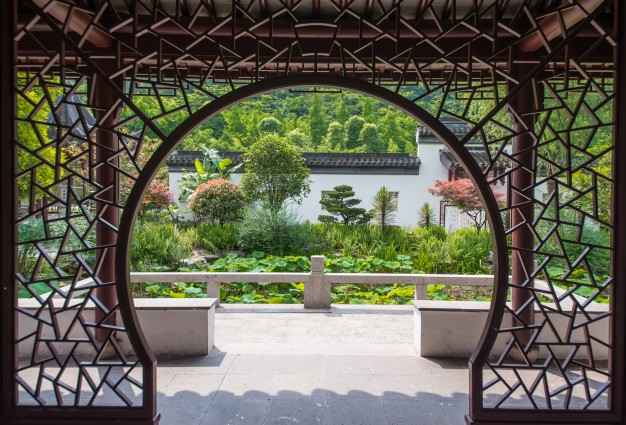Its no secret that many cultures have perceived gardens as the basis of knowledge and understanding. In fact, should we take it a step further, we could convey that gardens are the aesthetical reflections of knowledge, itself. And, since gardens are myriad and diverse, wherever we journey on Earth’s sculptural planes, so too, is the knowledge base that it reflects. Infinite, wonderous, and at the peak of shaping our imaginations. To know that knowledge can be crafted and designed, through visual and landscape artistry is wonderous. Encouraging us to inquire into the richness of knowledge. How human creativity serves as co-creators within its very Being !

When entering the world of children’s domain, and that haven of early, childhood education, immersion in gardens is crucial. Yet, its not just any immersion of playing on the playground, and other devices of childhood frolic. Though such have their uses, there is another untapped area to partake in, when it comes to treating early, childhood education, as a holistic paradise of wonder and reflection. That world relates to the phenomenon for children to experiment and engage with gardens. Colors. Shapes. Design. Texture. Scent. Patterns. Immersing in untapped levels of the human sensory. Observing their performance in the steady growth and fruition of gardenal patterns, and how they [gardens] wrap and decorate themselves around spatial arrangements and infrastructures, is telling in the design of knowledge, for that particular area. What is its unique attribute from that particular point on Earth’s spatial arrangement? What peculiar contribution does it produce for the greater realm of knowledge ? And, furthermore, how does it set itself apart from the rest paradise, and its myriad designs of gardens as sources of knowledge?


At schools which are nourished in the gardens, wonderous tale is given, indeed! Such landscape designs of educational paradises reflects how diverse shaping harmonizes together. You can sense those invisible movements and rhythms reflected through the stillness of the vegetation. This Earthly presence, whose invisible forces, keeps knowledge going through an everlasting connection, with the Universal realm. It is this realm, that can still be observed within the context of the Pre-K and K-G stages of development. And, if nurtured properly, it can continue into the latter stages of the middle and high school years.

A mini tour of such campuses highlights just how meticulously nature continues to wrap itself around the structure, and spatial arrangements of education’s design. The beginning. Sides. Posterior. Nature’s vegetation creates an ongoing masterpiece of knowledge’s shaping, and its reflection of educational objectives and artistry at schools, reflecting the gardens.
Therefore, when we enter into the world of children, at the Pre-K and K-G stages, what possibilities are present within campus gardens, which allows pupils to understand their identity, unique rhythm, and performance, in experimental learning? When touching, feeling, smelling, and engulfing in basic context of sensory imagery, how are children introduced to their personal learning styles? Learning styles rendered in imagination and creativity, suitable for their age group, with all of the compatabilities of their individual persona? Its a wonder, wouldn’t you agree ?

When children engage with gardens, in the context of school spacing, what is happening beneath the surface ? What connections with knowledge are taking place? What mental barriers are being broken? How does strategic design of children with garden activities support discovery if their own intellectual journey ? Evenmoreso, how does the design of particular spacing influence how children, in the developmental stages, partake on this journey ?
Schools lavished in Earth’s lush greenery bring a healing vibe. It is so strategic, that in addition to the architecture, one does not feel that it takes on the traditonal structure of a school building. A fairytale world, in fact ! One, where learning is magical. A writing for another point in time, of course. Nevertheless, gardens play a role in that. The intricate shaping of their existence at schools of gardenal spacing illuminates and alludes to a unique style of learning and engagement. Its the gardenal architecture which piques the mind of visitors, newcomers, and inquiring minds, who visit the campus spacing. What is the energy of intellectual and creative greatness, and how do the gardens reflect that ?
When we return to the previous point of children in the early childhood education stages, and their matriculation on gardenal spaces, we are also coming into terms with how a child feels comfortable in their unique way of learn. It is the comfort, which makes the learning experience, a holistic one. It is reverting to the natural element, flow, and pace of learning, which ensures that learning is an artform, rather than a chore-a tedious chore, that one has to do with displeasure and unease. On the contrary, the gardens reinforce the notion of knowledge being life-sustaining, healing, and nourishing. In observing the growth of gardens, one becomes in sync with that natural rhythm, flow, and structure. A “paradox” of wild harmony, where knowledge is structured, but free. Designed in a format, if being adventurous, and craving for more. More wealth of imagination. More wealth of exploration. More opportunities to be a co-creator, alongside knowledge’s audacity to flourish. It seems to be at the early stages of childhood, where humanity is most connected with the roots of knowledge. Afterwards, we spring out of it. Unless by some chance, the seeds are carried on into later elementary, middle, and high school stages.

So, as more schools and educational, learning centers begin to explore the role of gardens in school spacing let’s keep in mind the early, developmental years, those crucial energies of childhood genius. Those stages when children are still connected to that invisible world of Universal intellect. A world where the greatest of scholars maintained a connection to, well into their adult years. And, as we watch schoolchildren frolic in the way of an invisible pattern, allow the myriad structures of gardens, and their rhythmic patterns, to. . .lead us in educational growth, by nature’s design.



